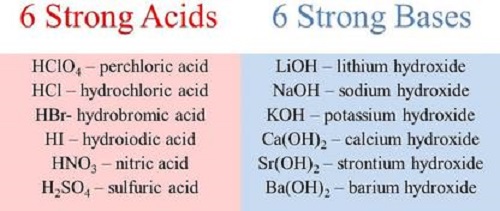Electrolytes and non-electrolytes are substances that differ in their ability to conduct electricity when dissolved in a solution. However, there are some similarities between them:
- Molecular Structure:
- Both electrolytes and non-electrolytes can exist in various molecular forms, such as compounds or mixtures.
- Solubility:
- Both types of substances can dissolve in a solvent, such as water. The solubility of a substance in a particular solvent depends on factors like temperature and the nature of the molecules.
- Chemical Composition:
- Electrolytes and non-electrolytes can be composed of ions or molecules. The key difference lies in how these entities behave in solution.

Despite these similarities, there are crucial differences between electrolytes and non-electrolytes:
Differences:
- Conductivity:
- The primary distinction is in their ability to conduct electricity. Electrolytes, when dissolved in a solution, dissociate into ions and are capable of conducting an electric current. Non-electrolytes do not dissociate into ions and do not conduct electricity.
- Ionization:
- Electrolytes ionize into positively and negatively charged ions when dissolved in a solution. This ionization process allows them to conduct electricity. Non-electrolytes remain in molecular form and do not produce ions in solution.
- Examples:
- Common examples of electrolytes include salts, acids, and bases. These substances dissociate into ions in solution. Non-electrolytes include substances like sugar, ethanol, and most organic compounds, which do not produce ions when dissolved.
- Behavior in Solution:
- Electrolytes actively participate in chemical reactions and exhibit conductive properties in solution. Non-electrolytes do not participate in ionization reactions and do not conduct electricity.
Understanding the differences between electrolytes and non-electrolytes is important in various fields, including chemistry, biology, and medicine, as it impacts their roles in biological systems and industrial processes.
What are electrolytes?
Electrolytes are substances that conduct electricity when dissolved in a solution, typically water. They are crucial for various physiological and chemical processes in living organisms and play a significant role in many industrial applications. Electrolytes can be categorized into two main types: strong electrolytes and weak electrolytes.
- Strong Electrolytes:
- Strong electrolytes completely dissociate into ions when dissolved in a solution. This means that all the molecules of the electrolyte break apart into their constituent ions, allowing the solution to conduct electricity effectively. Examples of strong electrolytes include:
- Salts: Sodium chloride (NaCl), potassium nitrate (KNO₃).
- Strong acids: Hydrochloric acid (HCl), sulfuric acid (H₂SO₄).
- Strong bases: Sodium hydroxide (NaOH), potassium hydroxide (KOH).
- Strong electrolytes completely dissociate into ions when dissolved in a solution. This means that all the molecules of the electrolyte break apart into their constituent ions, allowing the solution to conduct electricity effectively. Examples of strong electrolytes include:
- Weak Electrolytes:
- Weak electrolytes only partially dissociate into ions in solution. This partial ionization results in a lower conductivity compared to strong electrolytes. Weak acids and weak bases are common examples of weak electrolytes. Examples include acetic acid (CH₃COOH) and ammonia (NH₃).
The conductive properties of electrolytes are due to the presence of ions in the solution. Ions are charged particles that carry an electric charge, either positive (cations) or negative (anions). When an electrolyte dissolves, these ions are free to move and carry an electric current through the solution.
In biological systems, electrolytes are essential for maintaining cellular function, nerve conduction, muscle contraction, and proper fluid balance. Common electrolytes in the human body include sodium (Na⁺), potassium (K⁺), calcium (Ca²⁺), chloride (Cl⁻), bicarbonate (HCO₃⁻), and phosphate (PO₄³⁻).
Maintaining the right balance of electrolytes is crucial for overall health, and imbalances can lead to various health problems. Electrolyte solutions are often used to rehydrate individuals, especially in situations where there is fluid loss due to sweating, vomiting, or diarrhea.
What are Non electrolytes?
Non-electrolytes are substances that do not readily dissociate into ions when dissolved in a solution, and therefore, they do not conduct electricity. Unlike electrolytes, non-electrolytes remain in molecular form in solution. These substances are typically covalent compounds, and their molecules do not ionize into charged particles (ions) when dissolved.
Common examples of non-electrolytes include:
- Sugar (Sucrose): Sugar is a classic example of a non-electrolyte. When dissolved in water, sugar molecules remain intact and do not break down into ions.
- Ethanol (Alcohol): Ethanol is another non-electrolyte. It dissolves in water but does not produce ions, and the solution does not conduct electricity.
- Urea: Urea is a compound found in urine and is an example of a non-electrolyte. It remains in molecular form when dissolved in water.
- Methane (CH₄): Methane is a non-polar molecule, and when dissolved in water, it does not produce ions. As a result, it does not contribute to electrical conductivity in the solution.
- Glycerol: Glycerol is a non-electrolyte commonly used in various cosmetic and pharmaceutical products. In solution, glycerol molecules do not dissociate into ions.
Non-electrolytes are characterized by their lack of ionization when dissolved in a solution. They are often organic compounds with covalent bonds, and their molecules are electrically neutral. In contrast to electrolytes, non-electrolytes do not contribute to the flow of electric current in a solution because they do not generate charged particles that can carry the current.
What are the difference between Electrolytes and Non electrolytes?
Electrolytes and non-electrolytes are substances that differ in their ability to conduct electricity when dissolved in a solution. Here are the key differences between electrolytes and non-electrolytes:
- Ionization and Conductivity:
- Electrolytes: These substances readily ionize into ions when dissolved in a solution, leading to the formation of charged particles that can conduct electricity. Strong electrolytes completely ionize, while weak electrolytes only partially ionize.
- Non-electrolytes: These substances do not ionize when dissolved in a solution, and therefore, they do not conduct electricity. The molecules of non-electrolytes remain intact in the solution.
- Presence of Ions:
- Electrolytes: When electrolytes dissolve, they produce positively charged ions (cations) and negatively charged ions (anions) in the solution.
- Non-electrolytes: Non-electrolytes do not produce ions when dissolved; their molecules remain in their original form.
- Examples:
- Electrolytes: Common examples include salts (e.g., NaCl), strong acids (e.g., HCl), and strong bases (e.g., NaOH).
- Non-electrolytes: Common examples include sugar (sucrose), ethanol, urea, and glycerol.
- Conductivity:
- Electrolytes: These substances contribute to the electrical conductivity of a solution due to the presence of freely moving ions.
- Non-electrolytes: Non-electrolytes do not contribute to the electrical conductivity of a solution because their molecules do not break down into ions.
- Molecular Structure:
- Electrolytes: Electrolytes can be ionic compounds or compounds that ionize in solution.
- Non-electrolytes: Non-electrolytes are typically covalent compounds, and their molecules remain intact in solution.
- Role in Biological Systems:
- Electrolytes: Essential for various physiological processes in living organisms, including nerve conduction, muscle contraction, and maintenance of fluid balance.
- Non-electrolytes: While non-electrolytes may have other biological roles, they are not directly involved in electrical signaling and conductivity within the body.
Understanding these differences is important in various scientific fields, including chemistry, biology, and medicine, as it impacts the behavior of substances in solution and their effects on biological systems.
Table summarizing the similarities and differences between Electrolytes and Non electrolytes
Here’s a table summarizing the key similarities and differences between electrolytes and non-electrolytes:
| Characteristic | Electrolytes | Non-electrolytes |
|---|---|---|
| Ionization in Solution | Dissociate into ions when dissolved | Do not dissociate into ions; remain as molecules |
| Conductivity | Conduct electricity in solution | Do not conduct electricity in solution |
| Examples | Salts (NaCl), strong acids (HCl), strong bases | Sugar (sucrose), ethanol, urea, glycerol |
| Presence of Ions | Produce cations and anions in solution | Molecules remain intact in solution |
| Molecular Structure | Can be ionic or ionize in solution | Typically covalent compounds |
| Role in Biological Systems | Essential for physiological processes | May have other biological roles |
This table highlights the fundamental differences in ionization behavior and conductivity between electrolytes and non-electrolytes, as well as provides examples and notes on their respective roles in biological systems.
Summary of Similarities Between Electrolytes and Non electrolytes
Here’s a summary of the key similarities between electrolytes and non-electrolytes:
- Molecular Structure:
- Both electrolytes and non-electrolytes can exist in various molecular forms, such as compounds or mixtures.
- Solubility:
- Both types of substances can dissolve in a solvent, such as water. The solubility of a substance in a particular solvent depends on factors like temperature and the nature of the molecules.
- Chemical Composition:
- Electrolytes and non-electrolytes can be composed of ions or molecules. The key difference lies in how these entities behave in solution.
- Concentration:
- Both electrolytes and non-electrolytes can be present in different concentrations in a solution, affecting their properties and behavior.
While they share these similarities, it’s crucial to recognize that the primary distinction between electrolytes and non-electrolytes lies in their ability to conduct electricity. Electrolytes ionize in solution and can conduct an electric current, while non-electrolytes do not dissociate into ions and do not conduct electricity.
Here are some frequently asked questions (FAQs) related to electrolytes and non-electrolytes:
- What are electrolytes?
- Electrolytes are substances that can conduct electricity when dissolved in a solution. They ionize into positively and negatively charged ions, facilitating the flow of electric current.
- Give examples of strong electrolytes.
- Examples of strong electrolytes include salts (e.g., NaCl), strong acids (e.g., HCl), and strong bases (e.g., NaOH).
- How do electrolytes differ from non-electrolytes?
- The key difference is that electrolytes ionize in solution, producing ions and conducting electricity, while non-electrolytes do not ionize and do not conduct electricity.
- What are non-electrolytes?
- Non-electrolytes are substances that do not ionize into charged particles when dissolved in a solution. They remain in molecular form and do not conduct electricity.
- Provide examples of non-electrolytes.
- Examples of non-electrolytes include sugar (sucrose), ethanol, urea, and glycerol.
- Why are electrolytes important in the human body?
- Electrolytes are crucial for maintaining proper fluid balance, nerve conduction, muscle contraction, and various physiological processes in the human body.
- How are electrolytes used in medical treatments?
- Electrolyte solutions are often used for rehydration in medical treatments to restore electrolyte balance, especially in situations involving dehydration or fluid loss.
- Can substances be both electrolytes and non-electrolytes?
- No, a substance is either an electrolyte or a non-electrolyte. The distinction is based on its ability to conduct electricity when dissolved in a solution.
- Do all acids and bases act as electrolytes?
- No, only strong acids and bases fully ionize in solution and act as strong electrolytes. Weak acids and bases are considered weak electrolytes.
- How do electrolytes impact the conductivity of solutions?
- Electrolytes enhance the conductivity of solutions by providing freely moving ions that can carry an electric current. The degree of conductivity depends on the strength of the electrolyte.
These FAQs cover fundamental aspects of electrolytes and non-electrolytes, including their definitions, examples, importance, and applications.
References
- Alluru S. Reddi, (2023): Fluid, Electrolyte and Acid-Base Disorders. Springer Nature
- Bernard M. Garrett (2017): Fluids and Electrolytes Routledge
- Kang Xu, (2023): Electrolytes, Interfaces and Interphases. Royal Society of Chemistry











Leave a Reply